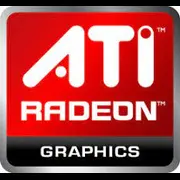ATI Radeon HD 4870 X2

ATI Radeon HD 4870 X2: A Legend of the Past in the Realities of 2025
Let’s explore why it's worth remembering this veteran of the GPU industry in 2025.
Introduction
The ATI Radeon HD 4870 X2 is a legendary graphics card from 2008 that became a symbol of the technological breakthrough of its time. Despite its age, it still piques the interest of enthusiasts and collectors. In this article, we will examine what the HD 4870 X2 looks like 17 years after its release and who might find it useful today.
1. Architecture and Key Features
R700 Architecture: Two Chips in One
The HD 4870 X2 is built on the R700 architecture, combining two RV770 graphics processors on a single board. This design allowed the card to compete with top-tier NVIDIA models thanks to CrossFireX technology "out of the box."
Manufacturing Process
The chips were manufactured using a 55nm process, which was cutting-edge for 2008. This ensured a balance between performance and energy efficiency (by the standards of that time).
Unique Features
- DirectX 10.1: Support for new effects in late 2000s games.
- GDDR5: The first ATI card with this type of memory.
- Unavailable Technologies Today: Modern features like ray tracing (RTX), DLSS, or FidelityFX are absent.
2. Memory: The Foundation for Past Successes
Type and Capacity
The HD 4870 X2 came equipped with two 512MB GDDR5 modules, totaling 1GB of memory. For the era of resolutions up to 1920×1200, this was sufficient, but today even basic games require at least 4GB.
Bandwidth
With a 256-bit bus and a frequency of 3.6 GHz (effective 7.2 GHz), the bandwidth reached 115.2 GB/s — an impressive figure comparable to budget cards from the 2020s, such as the GTX 1650.
3. Gaming Performance: Nostalgia for HD
FPS Examples in Older Titles
- Crysis (2007): 35-40 FPS on high settings at 1680×1050.
- Call of Duty: Modern Warfare 2 (2009): 60+ FPS at 1920×1080.
- The Witcher 2 (2011): 25-30 FPS on medium settings.
Modern Games
By 2025, the HD 4870 X2 struggles with even indie games at low settings. For example, Hollow Knight (2017) will launch but may lag due to insufficient VRAM.
Resolutions
Maximum 1080p for older games. Ray tracing and upscaling (DLSS/FSR) are not supported.
4. Professional Tasks: Time is Ruthless
Video Editing and 3D Modeling
The card is unsuitable for modern editors like DaVinci Resolve or Blender due to:
- Lack of support for Vulkan API and modern versions of OpenCL.
- Low memory capacity.
Scientific Computing
CUDA cores (NVIDIA) are absent, and OpenCL performance is too low even for simple tasks.
5. Power Consumption and Thermal Output
TDP and PSU Requirements
The card’s TDP is 300W. A power supply of at least 600W with two 8-pin connectors was required for stable operation.
Cooling
The two-slot system with a turbine cooler is noisy even at low speeds. In 2025, cases with open layouts and additional fans are recommended.
6. Comparison with Competitors
2008 Rivals
- NVIDIA GeForce GTX 280: Lagged in performance but was more energy-efficient (236W TDP).
- HD 4870 X2 vs. SLI Configurations: Often outperformed two GTX 260s in SLI but suffered from micro-stuttering.
Modern Analogues
Today, the HD 4870 X2 can be compared to budget cards like the AMD Radeon RX 6400 (priced at $100-150), which is ten times more energy-efficient and supports 2025 technologies.
7. Practical Advice
Power Supply
Even in 2025, the HD 4870 X2 requires a power supply with at least 80+ Bronze efficiency and a 600W rating.
Compatibility
- Platforms: Only compatible with systems using PCIe 2.0/3.0. Compatibility with PCIe 4.0/5.0 is not guaranteed.
- Drivers: Official support ended in 2015. Issues may arise with Windows 10/11 and Linux.
8. Pros and Cons
Pros
- Historical value for collectors.
- High performance in games from 2008-2012.
Cons
- Noisy cooling.
- No support for modern APIs and technologies.
- Limited compatibility with new software.
9. Conclusion: Who is the HD 4870 X2 For?
This graphics card is an artifact of its era that should be considered only in two cases:
1. Retro Gaming: For running classics from the 2000s on original hardware.
2. Collecting: As a part of the history of the GPU industry.
In 2025, the HD 4870 X2 serves no practical purpose for everyday tasks. However, if you want to indulge in nostalgia or build a retro PC, this card would be a great choice. Prices for new units (if available) may reach $300-500 due to collector's value, but typically, it is acquired on the secondary market for $50-100.
P.S. If you are looking for a GPU for work or modern gaming, consider the Radeon RX 7700 XT or GeForce RTX 4060. The era of the HD 4870 X2 has passed, but its legacy lives on in AMD RDNA 4 technologies.
Basic
Memory Specifications
Theoretical Performance
Miscellaneous
Benchmarks
Compared to Other GPU
Share in social media
Or Link To Us
<a href="https://cputronic.com/en/gpu/ati-radeon-hd-4870-x2" target="_blank">ATI Radeon HD 4870 X2</a>